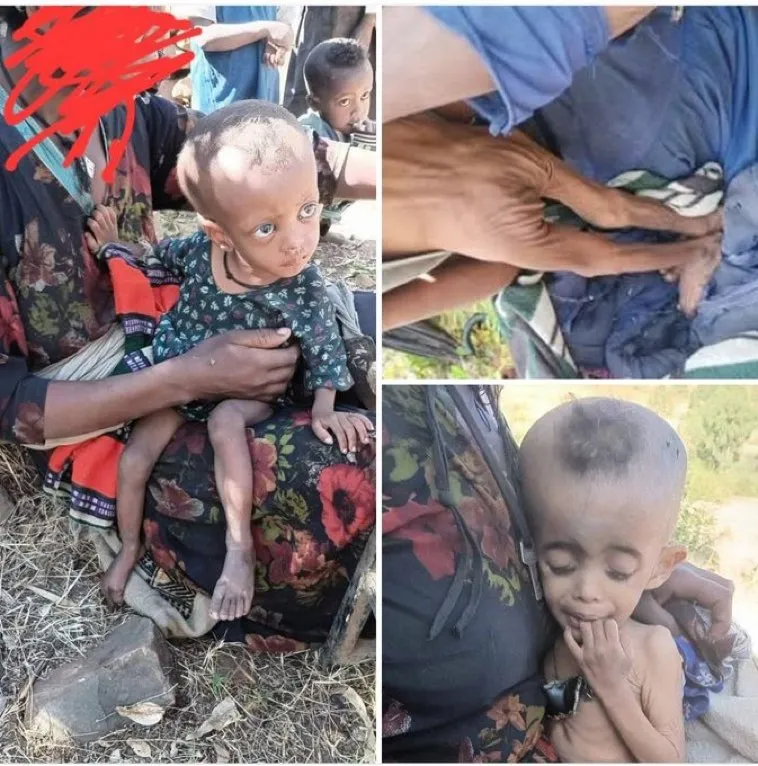Tsegaye Tegenu, PhD
2023-09-16
In part seven I have outlined 23 strategies and 82 polices for the vision goals of creating post-scarcity economy of Ethiopia. Implementing them, however, needs prioritization and mixing approach. Prioritization allows the government to concentrate efforts on addressing the most pressing economic challenges, sequencing policies and help allocate limited resources. Mixing policies can create synergy, where the combined impact of multiple policies is greater than the sum of their individual effects. The question is: what are the criteria used for prioritization and mixing the economic strategies and policies outlined in part seven?
The criteria for prioritizing and mixing economic policies can vary depending on the use of technical aspects of policy analysis and evaluation (such as impact assessment, feasibility studies, const-benefit analysis, risk assessment, etc.). Priorities and mixing of economic policies are also influenced by differences in the use of economic theories and political ideologies about the role of government and the market in the economy.
In my study I used a different framework, which is not common. I used a long-term approach and phase system thinking to prioritize and mix the 23 strategies and 82 policies mentioned in part seven. By its very nature, the vision of creating a post-scarcity economy (the three-legged vision goals) is a long-term aspiration, covering a generation, an average period of 20-25 years. Implementation of the strategies and polices of the vision requires a detailed and structured plan that outlines how they will be executed, monitored, and evaluated over a defined period. Long-term planning provides clarity of direction, establishment of measurable goals, allows for the allocation of resources, and measuring progress.
Long-term planning often involves breaking down the overall plan into phases or specific time periods, each with its own set of objectives and actions. These phases help structure the long-term plan, making it more manageable and allowing for progress monitoring. The question is how the phases in long-term planning is structured. What are the specific phases, the duration of each phase, and what kind of objectives and action each of them encompasses.
I identified the phases of the long-term post-scarcity economy plan (combination of 23 strategies and 82 policies) using the analogy and fundamental stages of an aircraft’s flight: takeoff, climb, and cruise stages. These phases represent the core elements of an aircraft’s flight profile. They serve a distinct purpose for completing a successful flight (in my case a successful vision). Different factors, equipment, and considerations are needed to ensure the safe and efficient operation of each phase.
The takeoff phase is the initial stage of a flight during which the aircraft transitions from a stationary position on the ground to becoming airborne. The primary purpose of this phase is to generate enough lift and speed to lift the aircraft off the runway. A suitable runway, sufficient engine thrust, aerodynamic devices on the wings, rotate (pitch up) at a precise speed, positive climbing rate, and retracting the landing gear are needed for the takeoff stage.
After takeoff, the aircraft enters the climbing phase, where it gains altitude and ascends to its designated cruising altitude. The cruise phase is the main segment of a flight during which the aircraft maintains a stable and level flight path at its designated cruising altitude. The primary purpose of this phase is to cover long distances efficiently and comfortably. Thrust management, altitude control, speed acceleration, accurate navigation, monitoring and ongoing communication is needed to reach the desired cruising altitude.
I have broken down the long-term strategies, policies and plan of creating post-scarcity economy of Ethiopia into three phases taking into consideration the needs and requirements each stage of an aircraft flight. These are: Takeoff Phase (Stage of Creative Destruction of Subsistence and Informal economy, Years 1-6), Climbing Phase (Economic Doubling Time and Business Expansion – Years 7-16), Cruise Phase (Sustained Growth and Development – Years 17-25). These phases reflecting a comprehensive approach to achieving superabundance while addressing both resource creation and sustainability concerns. The following policy areas and approach provide you an overarching theme which helps to mix specific policies and strategies discussed in part seven.
Takeoff Phase (Stage of Creative Destruction of Subsistence and Informal Economy, Years 1-6):
As we have tried in the past, it is not possible to creatively transform the subsistence and informal economy (constituting about 50% of the national GDP) by improving and upgrading their economic activities while retaining their core elements of survival and reproduction. Their economic structure and practices lack the inherent capacity for transformation and long-term sustainability. We need to borrow and use the creative destruction concept introduced by economist Joseph Schumpeter. It refers to the process where new and innovative economic activities disrupt and replace existing ones, often leading to the obsolescence of traditional economic structures and practices. The following policy areas focus to replace the subsistence and informal economic activities.
- Development of private sector, market and credit cooperation, and creation of new firms based on comparative advantage.
- Agriculture: private land ownership, crop specialization, commercialization and creation of capitalist framers
- Labor intensive industrialization, rural industrialization, industrial decentralization (mining sub-sector)
- Infrastructure development: invest in the necessary infrastructure to support resource creation and utilization
- Human and physical capital development
- Foundational economic policies: monetary and fiscal policy to establish a stable economic foundation
The above policy areas of creative destruction seek to replace outdated or less productive economic activities with new and innovative ones. The disruption of the traditional economy through combination of the elements of entrepreneurship development, market expansion, and private sector growth leads to the reallocation and accumulation of productive factors. With the right support and enabling conditions, individuals and communities can transition toward more sustainable and productive economic activities while minimizing negative disruptions.
Climbing Phase (Economic Doubling Time and Business Expansion – Years 7-16)
Economic doubling time focuses on the rate of growth required for a specific economic variable to double, such as GDP, investment and other macro indicators. Business expansion (microeconomic concept) refers to the growth and development of a specific company. It involves increasing the scale of operations, market presence, or product/service offerings of a business entity. The policy areas which reduce the doubling time and accelerate business expansion of this phase include:
- Diversified urban entrepreneurship. This policy area encompasses the idea that cities/towns are not dominated by a single industry or sector but instead host a diverse array of businesses, startups, and entrepreneurial ventures across various industries and sectors.
- Diversifying and balancing manufacturing sub-sector (chemicals, metals and machinery, transport equipment, electrical machinery, textiles and clothing, agro-industries)
- Upgrading and encouraging productivity (capital and TFP). Policy of incentives for private sector innovation and R&D, and support for technology clusters and innovation. Improvements in productivity, often driven by technological advancements, can accelerate economic growth. When workers and businesses become more efficient in producing goods and services, it can lead to higher output and economic expansion
- Foreign Direct Investment (FDI): Attracting FDI can inject capital, technology, and expertise into the local economy. Developing countries often seek to create a favorable investment climate to encourage FDI.
- Education and workforce development: A well-educated and skilled workforce can boost productivity and innovation, which in turn can contribute to economic growth. Investments in education and training can reduce the doubling time by increasing human capital
- Establish growth and efficiency supporting services essential for the sustainable development of businesses and regions.
- Backward, forward and business linkages, agglomeration and competitiveness. Strong linkages (both backward and forward) and agglomeration can contribute to the competitiveness of businesses and industries. Competitiveness, in turn, can further reinforce the attractiveness of a region for businesses, potentially leading to more agglomeration. Policymakers and businesses often consider these relationships when making decisions about location, investment, and regional development strategies.
- Small towns consolidation and urban clustering
- Infrastructure Development. Adequate infrastructure, including transportation, communication, and energy networks, is essential for economic growth. Infrastructure investment can reduce bottlenecks and inefficiencies, thereby speeding up growth.
Cruise Phase (Sustained Growth and Development – Years 17-25)
The cruise phase is the most extended phase of a flight, during which the aircraft maintains a steady altitude and speed en route to its destination. Similarly, the strategies and polices at this stage of the economic development aims to maintain the stability and equilibrium of the economic system. They do not explicitly advocate for expansion or acceleration, rather focus on achieving specific objectives that prioritize sustainability, equity, and responsible development. The policy areas included at this stage of the long-term planning are:
- Continue to address the gaps of phase two (such as human capital development, infrastructure development, macroeconomic stability, access to finance, encouraging entrepreneurship, regional and local development, public-private partnerships) to achieve a more prosperous and equitable future.
- Investment in innovation, technology and research. Advances in innovation and technology are crucial for long-term economic growth. Investments in research and development, entrepreneurship, and the adoption of new technologies can lead to productivity gains and economic expansion.
- Institutional efficiency and long-term planning. Efficient institutions provide the foundation for the successful execution of long-term plans, ensuring that resources are used effectively, policies are implemented, and societal goals are achieved over the long run. In turn, long-term planning encourages institutions to consider the future impact of their actions and policies, promoting a more sustainable and resilient society.
- Global cooperation and trade, which are essential components of an interconnected global economy. While trade fosters economic growth and prosperity, global cooperation helps create the frameworks, rules, and collaborative efforts needed to ensure that trade benefits all nations, promotes sustainability, and addresses global challenges.
- Inclusive growth which emphasizes not only the pace of economic growth but also its distribution and impact across different segments of society. It seeks to ensure the success accomplishment of the missions stated in part four.
- Environmental Protection: which involves the conservation, preservation, and sustainable management of natural resources to ensure their availability for current and future generations.
The policy areas are interconnected and often require a coordinated approach to address the complex challenges and overlapping crisis facing the Ethiopian society and economy. Prioritization and mixing of economic strategies and policies require long-term approach and phase system thinking. That is how you do part seven.


















We talk about genocide and massacre, he talks about HODD.
He was a TPLF/EPRDF serve and that explains it.
what a shame!
The roadmap document is written in technical terms. The purpose and significance of the ideas are not easily accessible to a layman. I am not surprised by the comment. Ignorance is a burden that I have to tolerate.
Tsegaye